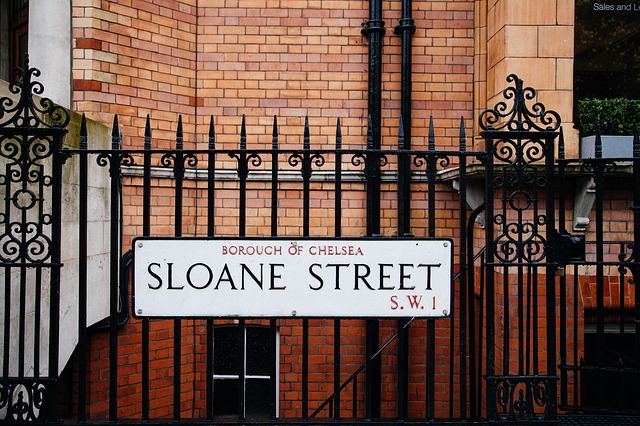By Tim Lambert
Early Chelsea
Chelsea began life as a Saxon village some miles from the thriving town of London. The name Chelsea is derived from the Saxon words cealc hythe. The word hythe meant a landing place for boats. The word cealc meant chalk so perhaps it was a chalky landing place for boats.
In the Middle Ages Chelsea was a tiny village. However, in the 16th and 17th centuries, Chelsea became fashionable as a place to live for rich people. In 1520 Thomas More the statesman moved to Chelsea. However, More’s house was demolished in 1740. In 1538 More built his private chapel, the More Chapel in the Church. Ropers Garden is named after his daughter Margaret Roper.
Furthermore in 1969 L. Cubitt Bevis made a statue of Thomas More, which now stands in Chelsea near the river.
In 1536 Henry VIII built a manor house in Chelsea but it was demolished in 1760.
The Physic Garden was founded in 1673 by the Worshipful Company of Apothecaries. Apprentices were trained in identifying plants. It opened to the public in 1983. Ranelagh Gardens opened to the public as a pleasure garden in 1742. (In the 18th century pleasure gardens were popular with the wealthy).
By the early 18th century Chelsea had a population of about 1,500. To us, it would seem tiny but by the standards of the time, it was a large village. Chelsea was flourishing and by the end of the 18th century, it was beginning to be engulfed by London.
Meanwhile, Kings Road got its name because in the 17th and 18th centuries, it was a private road running to the royal palace at Hampton Court.
The Royal Hospital Chelsea was designed by Sir Christopher Wren and was built in 1682-89 as a retirement home for old soldiers. The Chelsea Pensioners still wear the famous uniform of scarlet coats and tricorn hats.
Sloane Square in Chelsea is named after Sir Hans Sloane (1660-1753) who was a physician to Queen Anne, George I, and George II. He was also a naturalist who bought the land in the area in 1712.
The Old Dairy dates from 1796 when cows still grazed nearby.
Modern Chelsea
In the 19th century, Chelsea grew rapidly. Chelsea gained gas streetlights in 1824-25. Chelsea Bridge was built in 1853. Albert Bridge was built in 1873. Beside it is a sculpture called Boy and Dolphin created by David Wynne in 1975. Chelsea Embankment was made in 1874.
Chelsea Town Hall was built in 1860.
Chelsea is famous for the writers who lived there during the 19th century. Among them was the poet Leigh Hunt (1784-1859). Thomas Carlyle (1795-1881) moved to Chelsea in 1834. He lived in Cheyne Row. The writer Elizabeth Gaskell (1810-1865) was born in Cheyne Walk. Oscar Wilde (1854-1900) moved to Tite Street in Chelsea in 1884. The artist James McNeill Whistler also lived in Chelsea.
Furthermore, Robert Falcon Scott (1868-1912) explorer of the Antarctic once lived in Oakley Street.
Other writers who lived in Chelsea were George Eliot (1819-1880) and Henry James (1843-1916). The artist Dante Gabriel also lived in Chelsea.
Crosby Hall was originally built in Bishopsgate but it was dismantled and moved to Chelsea in 1910.
Chelsea Flower Show was first held in 1913.
The original Chelsea Old Church dated from the 12th century but it was mostly destroyed by German bombing in the Second World War and was rebuilt.
Chelsea Antiques Fair began in 1950 and the Chelsea and Westminster Hospital opened in 1993.
Today Chelsea is a flourishing area of London. Chelsea is known for the National Army Museum, which opened in 1971.
